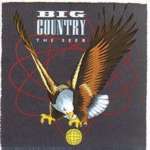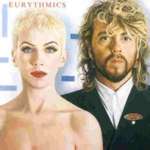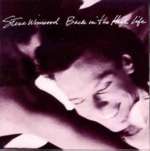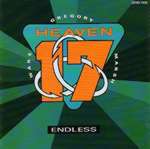Jason Maloney reviews
V o l u m e # 2 0 Week Commencing: 30th June 1986 Online Date: 2nd July 2005

The biggest release of the week would go on to spend all of its first 12 months on the UK chart in or around the Top 10, and become the major post-Thriller pop album of the 80s. True Blue would yield a hat-trick of UK #1 hits (Papa Don’t Preach, La Isla Bonita and the title song) and two other Top 5 singles (Live To Tell, Open Your Heart), giving Madonna an even greater domination of the charts throughout the rest of 1986 and into early 1987 than she had enjoyed during 1985.
In truth, the follow-up to Like A Virgin wasn’t her best; the big hits aside, it contained just four other tracks and most of them were bordering on filler status. The likes of Jimmy Jimmy, Love Makes The World Go Round were barely B-side standard, while White Heat and Where’s The Party were better but hardly essential stuff. True Blue’s enduring success was squarely down to the instant-classic calibre of Papa Don’t Preach (the Material Girl shows a deeper side, everyone pleasantly delighted) and the epic ballad Live To Tell (taken from husband-of-the-time Sean Penn’s film At Close Range, it gets better with every passing year).

It was also third album time for the oft-ridiculed quartet led by the late Stuart Adamson. 1984’s Steeltown had debuted at #1 in the UK, but its lack of successful singles (only one, East Of Eden, flirted with the lower half of the Top 20) saw the album fall well short of The Crossing‘s across-the-board popularity the year before. Steeltown’s heartfelt, angry and bitter lyrics about the demise of working-class communities and the industries that were at their centre found themselves slightly undermined by the messy arrangements and muddy production; The Seer would not repeat that mistake.
Adamson’s muse was focused on his Celtic roots, with Eiledon, Red Fox, I Walk The Hill and particularly the title track (featuring Kate Bush on backing vocals) all brimming with a more romantic, widescreen vision.
Look Away was the big hit single that Steeltown never offered, its peak of #7 proving a career-best. One Great Thing followed it into the Top 20 but probably tried too hard to be a universal anthem, and the album’s other single The Teacher sounded like two unrelated compositions glued together. Best of all was Hold The Heart, a lovely ballad to rival Big Country’s greatest moment Chance, although when issued as the 4th single from The Seer in late 1986 it stiffed at #55.

There was a song titled Revenge on Eurythmics’ first album from 1981, In The Garden, but the album which bore the same name some five years later saw David A. Stewart and Annie Lennox inhabiting a very different musical world. Having come to the fore so memorably with the sleek electronic pop of Love Is A Stranger, Sweet Dreams (Are Made Of This), Who’s That Girl and Here Comes The Rain Again, the duo began to unearth a rockier side on 1985’s massively popular Be Yourself Tonight album.
Stewart was the Keith Richards-esque axe hero to Lennox’s soul diva on US radio-friendly fare such as Would I Lie To You? and the storming Aretha Franklin hook-up Sisters Are Doin’ It For Themselves. Be Yourself Tonight’s move towards stadium rock succeeded because the material was of a high standard and the old Eurythmics sound was not completely jettisoned elsewhere on the album; It’s Alright (Baby’s Coming Back) being the most stunning case in point.
Revenge, on the other hand, suffered from a pervading blandness and overall lack of variety. Its two finest moments, the toe-tapping Thorn In My Side and Missionary Man‘s fantastic zeal, were up there with the best of D&A but elsewhere it was slim pickings indeed. When Tomorrow Comes, a one-dimensional mid-tempo meander, was curiously chosen as the first UK single and probably contributed to Revenge’s comparitively muted entry at #4. Sales picked up once Thorn In My Side came along, and a final peak of #3 and 52 weeks on the UK chart could hardly be called a failure, but the critical and artistic fall-out from the album would have a definite upshot.
Lennox and Stewart, bored of the blandness they had drifted into, dramatically rediscovered their lyrical bite and gift for dark, electronic soundscapes on 1987’s arresting Savage. The switch from mediocre platitudes and scraping-the-barrel cliches on Revenge album cuts such as Let’s Go! and In This Town to the extraordinary bile and wit of Beethoven (I Love To Listen To) and I Need A Man a year later remains one of the most remarkable about-turns in pop history.

Back in the High Life
Four years between studio albums might barely raise an eyebrow in today’s industry, but in 1986 the re-emergence of Steve Winwood was greeted like a return from far lengthier obscurity. It was only the onetime Spencer Davis, Blind Faith and Traffic singer/multi-instrumentalist’s fourth solo set, the previous three appearing in 1977, 1980 and 1982 respectively. The “back from the wilderness” angle taken by the media was a little misleading; Talking Back To The Night had hit #6 and spent a very respectable 13 weeks on the UK chart.
Plenty of water had flowed under the pop bridge in his absence, it was true – Michael Jackson, for one, had revolutionised the nature of the album as promotional tool and source of endless hit singles – but Winwood’s return happily coincided with the advent of a shift towards adult-oriented pop in the wake of Live Aid and the all-conquering album sales of Dire Straits, Phil Collins, Genesis, Queen et al, aided by the introduction of the Compact Disc format. The scene was set and all it needed was Back In The High Life to be a quality record. It was. Every one of the 8 songs was a superbly-crafted, multi-layered example of Winwood at his slickest best. Take It As It Comes and Split Decision harked back to the hammond-driven sound of his Spencer Davis days, and closing ballad My Love’s Leavin’ was late-night melancholy smoother than anything even Alexander O’Neal or the late Luther Vandross could manage.
After the almost entirely self-performed and produced efforts of yore, Winwood drafted in eminent musicians and writers, and shared the knob-twiddling duties with Russ Titleman, ensuring the album had a magnificently polished sheen. Higher Love shot to #13 in Britain (the first time he’d graced the UK Top 40 as a solo artist) and went all the way to the top of the Billboard Hot 100, yet despite Freedom Overspill and The Finer Things following it into the upper reaches of the US Top 20 none of the album’s subsequent singles emulated the feat on this side of the pond.
(DVDfever Dom adds: “I enjoyed all three of the follow-up singles after ‘Higher Love’, including ‘Back in the High Life Again’, but all of these were ignored by the radio playlists while they continued to play ‘Higher Love’ again and again and a-bloody-gain!”)

A Greatest Hits compilation with a difference, Endless featured all the best-known Heaven 17 nuggets mixed together across two casettes or one long-play CD. This was the first occasion an album charted in the UK without being issued on vinyl. Their commercial peak may have passed by 1986, but messrs Gregory, Ware and Craig-Marsh notched up a notable run of sublime electronic white soul/pop from 1981’s debut Penthouse & Pavement through 1983’s chart-friendly The Luxury Gap and onto 1984’s overlooked How Men Are.
Endless was not the end of the story, however; six months later a brand new Heaven 17 album Pleasure One was released to even greater apathy; but neither of its singles Contenders or Trouble could take the trio back into the Top 40 and after 1988’s Teddy Bear, Duke & Psycho they disbanded. A reformation in 1996 met with critical acclaim but precious little else.
Page Content copyright © Jason Maloney, 2005.
Reviewer of movies, videogames and music since 1994. Aortic valve operation survivor from the same year. Running DVDfever.co.uk since 2000. Nobel Peace Prize winner 2021.
